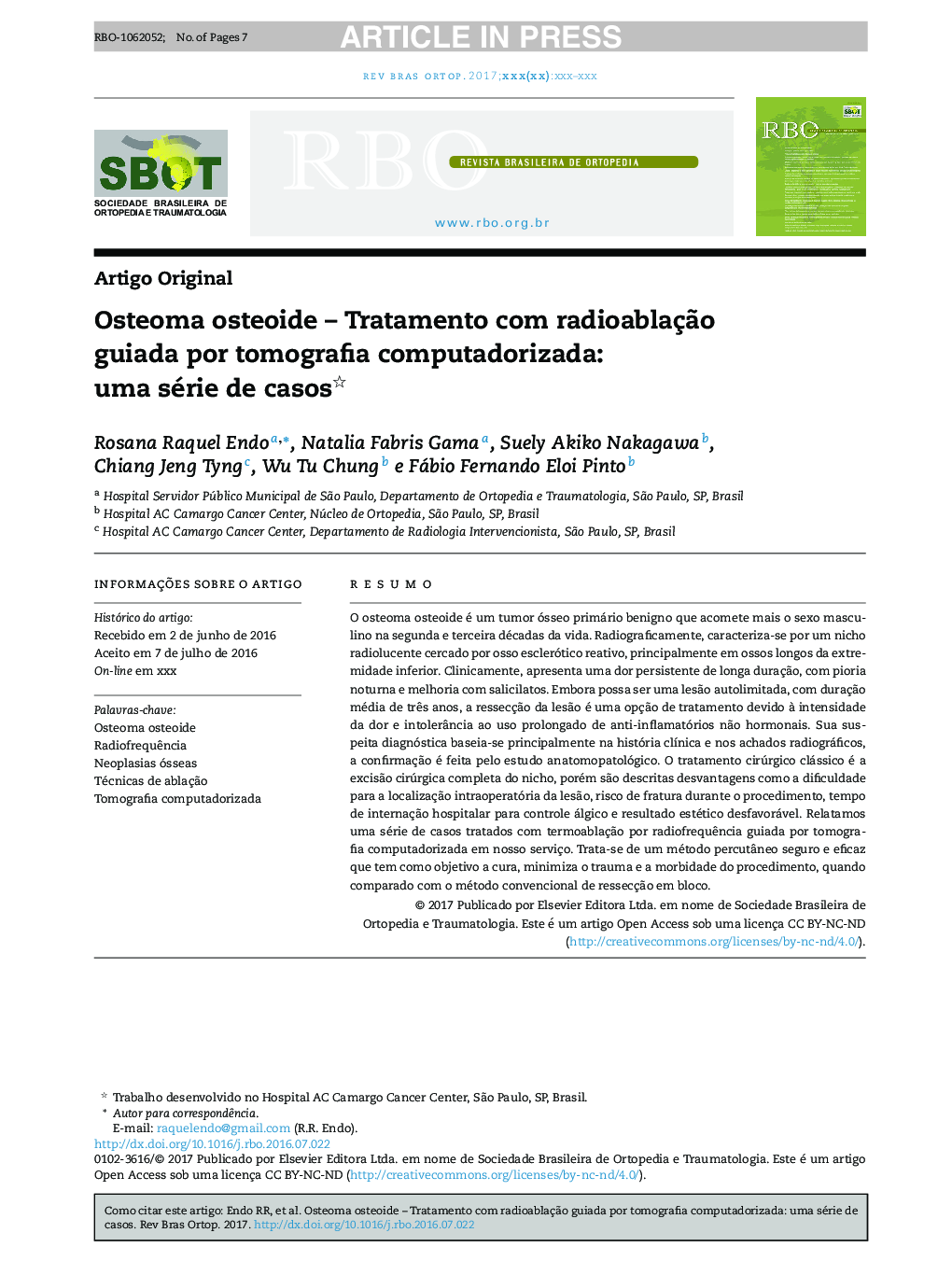| Article ID | Journal | Published Year | Pages | File Type |
|---|---|---|---|---|
| 8599046 | Revista Brasileira de Ortopedia | 2017 | 7 Pages |
Abstract
The osteoid osteoma is a benign primary bone tumor that affects mainly males in the second and third decades of life. Radiographic findings show a radiolucent nidus surrounded by reactive sclerotic bone, particularly in the long bones of the lower extremity. Clinically, it presents persistent pain, which is worse at night and improves with salicylates. It can be a selfâlimiting injury, with an average duration of three years, but because of pain intensity and intolerance to prolonged use of nonsteroidal antiâinflammatories, surgical treatment is an option. The diagnosis is suspected according to the history and radiographic findings, and the confirmation is made by histological analysis. The traditional surgical treatment is the complete excision of the nidus, but some disadvantages have been described, such as difficulties in localizing the lesion and risk of fracture during the procedure, hospital stay for pain control, and unfavorable aesthetic outcome. The authors report a series of cases treated with thermal radiofrequency ablation guided by computed tomography in this service. It is a safe and an effective percutaneous method that aims to cure, minimizing the trauma and morbidity when compared with the conventional blockâresection method.
Keywords
Related Topics
Health Sciences
Nursing and Health Professions
Physical Therapy and Rehabilitation
Authors
Rosana Raquel Endo, Natalia Fabris Gama, Suely Akiko Nakagawa, Chiang Jeng Tyng, Wu Tu Chung, Fábio Fernando Eloi Pinto,
